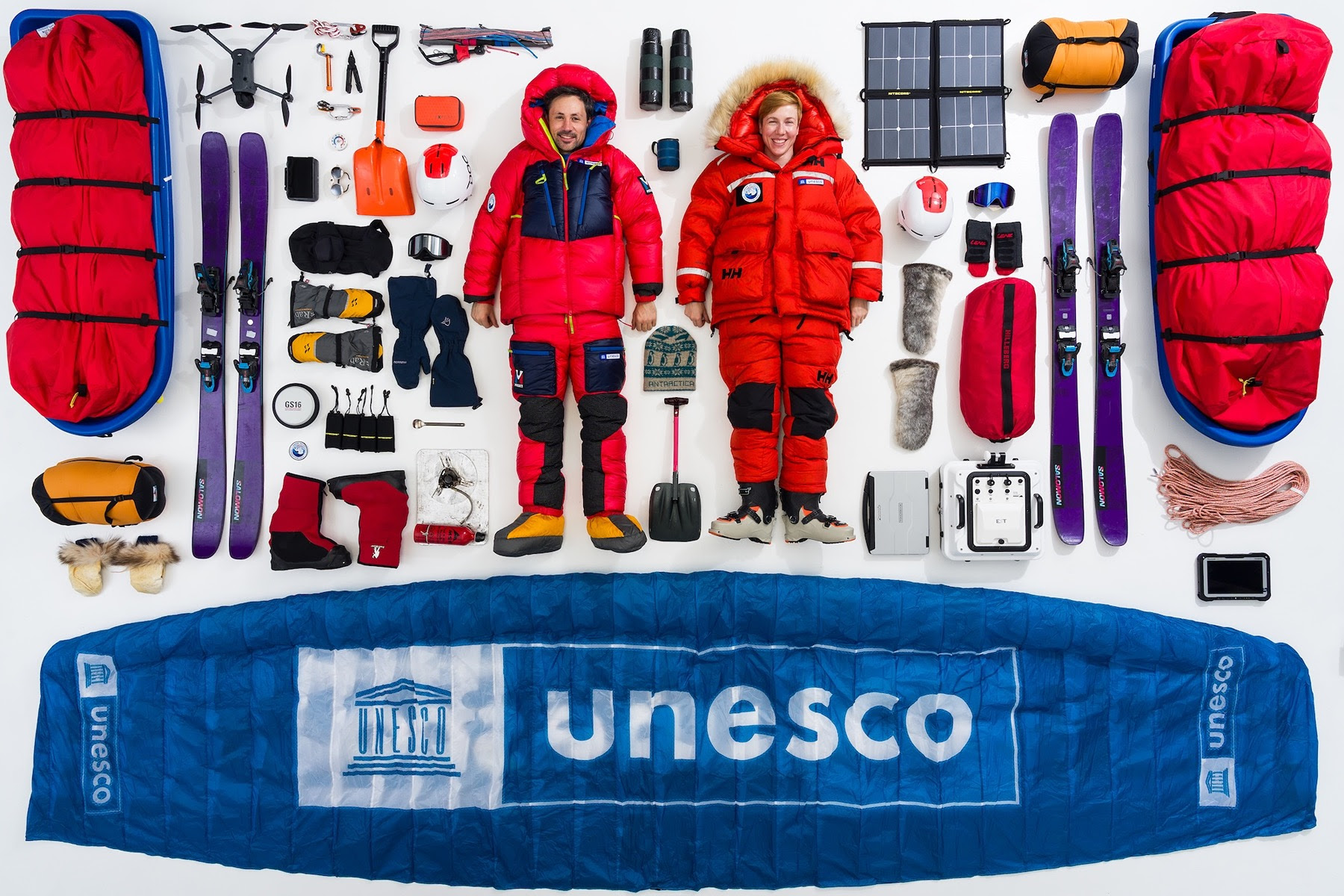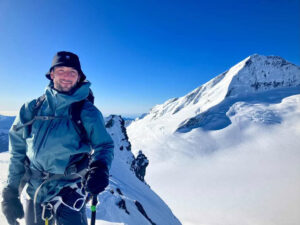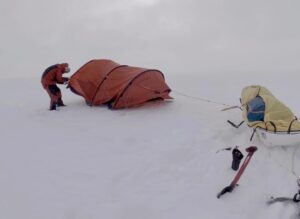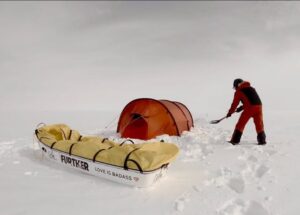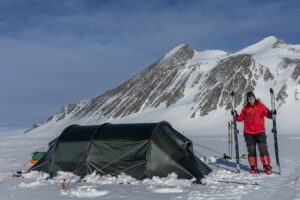The first wave of skiers is heading south to Antarctica next week to begin their expeditions. Compared with last year, there is a higher proportion of longer sled journeys, and notably, no guided teams will set off from the Hercules Inlet or Messner start routes to the South Pole.
Crossings
American Colin O’Brady, 40, is currently in Punta Arenas, Chile, preparing to return to Antarctica for the first time since his aborted attempt at the men’s South Pole speed record in 2023.
O’Brady sparked controversy across the adventure community in 2018 after claiming a full unsupported crossing of Antarctica, when, in fact, he had completed only a partial traverse — starting and finishing at inner coastlines and following the groomed South Pole Overland Traverse (SPOT) road for around 700km of his 1,700km.
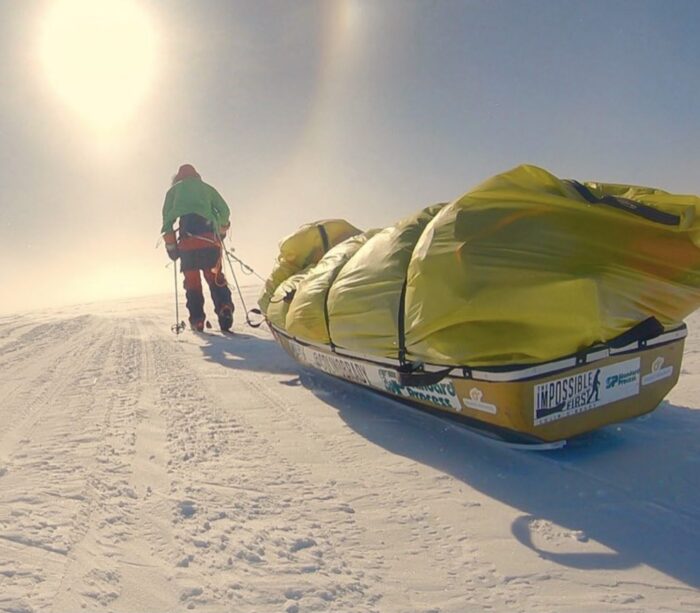
O’Brady in Antarctica in 2018-19, manhauling beside the well-packed SPOT road. Photo: Colin O’Brady
The SPOT road is a compacted route maintained by tractors pulling heavy sledges. It serves as a supply corridor between McMurdo Station and the South Pole, used to transport personnel and cargo. Flags placed roughly every 100m aid navigation during whiteouts, and all crevasses were filled during its original construction. Also importantly for skiers, the route removes the uneven sastrugi that winds typically carve into the snow.
Now, O’Brady appears to be returning to make amends, planning a true coast-to-coast crossing of the continent. He intends to start with a 225kg sled carrying enough supplies to last an estimated 110 days. His route may total around 3,000km.
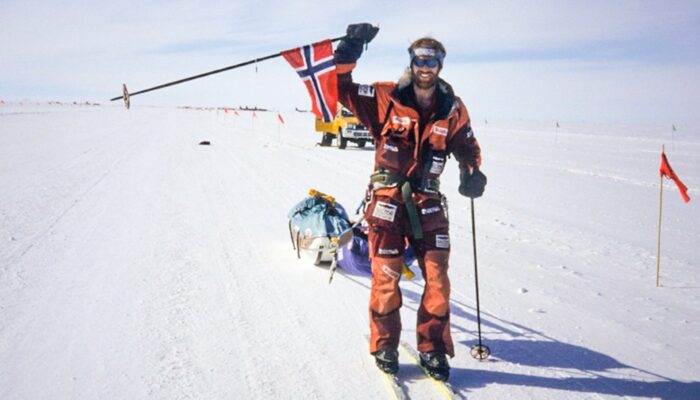
Borge Ousland on the first solo, unsupported crossing of Antarctica. Photo: Borge Ousland
Ousland’s mark
In 1997, Norwegian Borge Ousland became the first person to cross Antarctica solo and unsupported, following a similar route but finishing at McMurdo Station and occasionally using a rudimentary handheld kite known as a ski sail. Ousland skied for 65 days and covered 2,845km. O’Brady is striving to distinguish his latest expedition by suggesting he will travel entirely under human power, with no kite or other assistance.
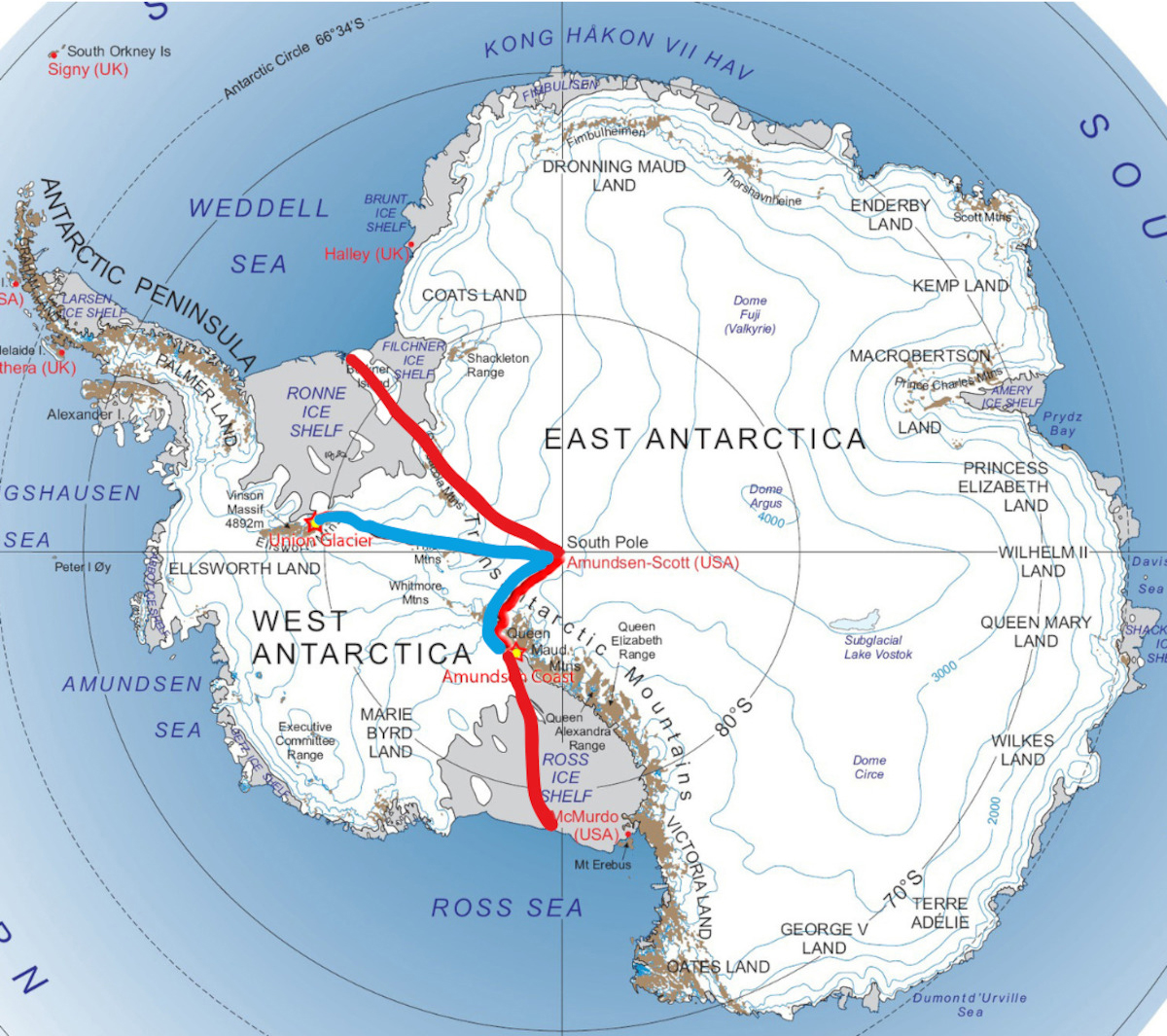
O’Brady’s proposed route, in red. The blue line denotes his 2018 ‘crossing.’ Map: Netflix.com
Antarctic mountaineer and historian Damien Gildea wrote about this latest crossing on social media, “This is like when Ueli Steck went back to Shisha Pangma. If you did it the first time like you said, why are you going back?”
The American has not responded to our inquiries, and Antarctic Logistics & Expeditions (ALE, the continent’s sole outfitter) cannot disclose client details. However, recent press coverage linked to a forthcoming Netflix film about his expedition suggests that O’Brady will start on Berkner Island, ski to the South Pole, and then continue across the Ross Ice Shelf to its edge.
Should he again use the SPOT road, however, he risks facing the same criticism as in 2018. Weather permitting, O’Brady is expected to begin his journey within the next week.
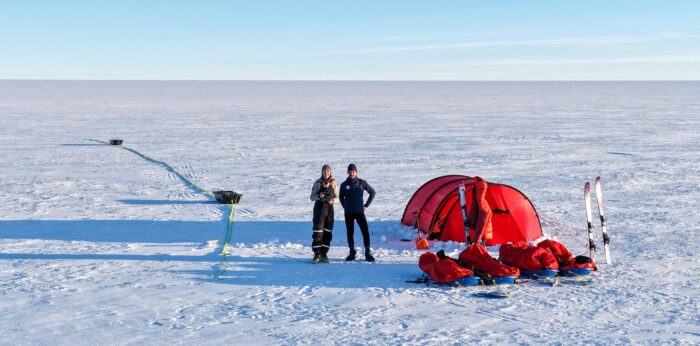
French adventurers Matthieu Tordeur and Dr. Heidi Sevestre testing their ground-penetrating radar system in Greenland this summer. Photo: underantarctica.com
Science + adventure
Another team is also finalizing preparations in Cape Town before leaving shortly for Antarctica. Matthieu Tordeur, 33, and Dr. Heidi Sevestre, 37, of France plan to kite-ski from the Russian research station Novolazarevskaya to Union Glacier via both the Pole of Inaccessibility and the South Pole. The Pole of Inaccessibility in Antarctica is the point on the continent farthest from any coastline.
Their 3,650km journey is expected to take around 80 days. Along the way, they will tow ground-penetrating radar equipment to study snow accumulation, ice layering, and to detect subglacial lakes and rivers.
This kite route was originally opened by Sebastian Copeland and Eric McNair-Landry in 2011-12.
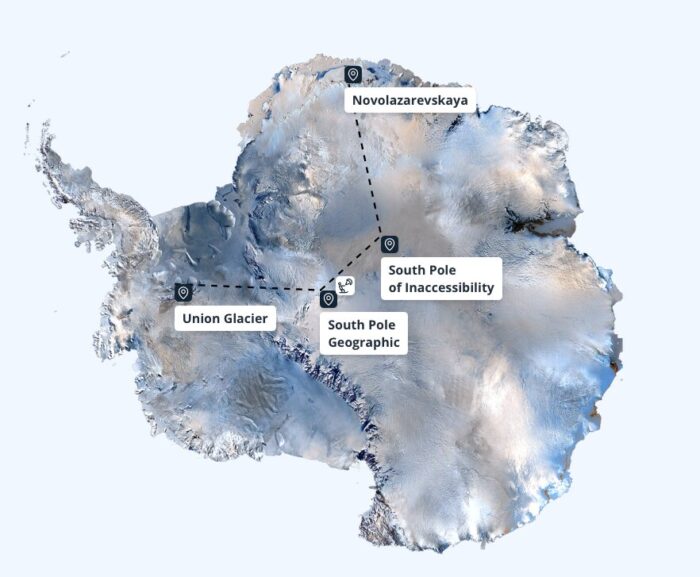
Image: www.underantarctica.com
Tordeur and Sevestre recently tested their radar system in Greenland, but it remains uncertain whether the 50m long radar array, which will trail behind their sleds, can withstand being hauled across Antarctic sastrugi for thousands of kilometers. Tordeur was formerly the youngest person to ski solo and unsupported to the South Pole.
South Pole round trips
Experienced Norwegian polar guide Kathinka Gyllenhammar and her daughter Emma, 21, plan to ski a unique return journey that combines skiing and snowkiting. The mother-daughter pair will ski from Union Glacier camp west to Constellation Inlet, where they will turn around and ski back toward the South Pole.
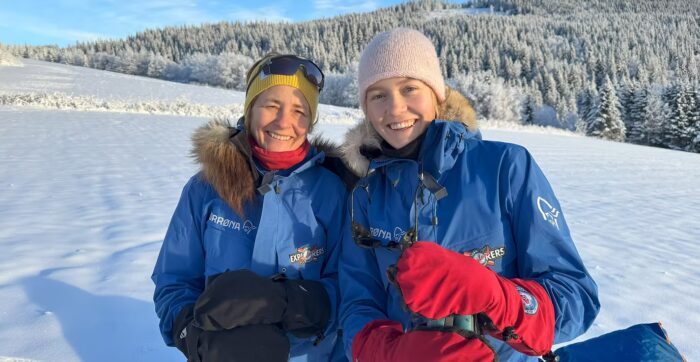
Kathinka, left, and Emma Gyllenhammar. Photo: miniogmuttern.com
Once at the Pole, the Norwegians will collect their kites and snowkite back to Union Glacier.
“We look at it as two separate trips, one unsupported and one wind-supported,” said the elder Gyllenhammar. Their multi-disciplinary journey will amount to around 2,400km, and they intend to head south next week.
Norwegian Sebastian Orskaug, 44, plans to ski from Hercules Inlet to the South Pole, where he will take a resupply before returning to Hercules Inlet using a ski-sail rather than a kite. Ski sails are handheld fabric wings that catch the wind to pull a skier across snow or ice, and are smaller, simpler, and lighter than kites. They do not require the heavy alpine-touring skis and boots often needed for kiting.
He estimates around 40 days to reach the Pole and 20 days for the return, with 10 planned contingency days. The 2,260km round trip is scheduled to begin on November 14.
Orskaug is a former diver with the Norwegian Navy and a medical doctor specializing in emergency and expedition medicine. He has previously wintered at Troll Research Station, climbed Aconcagua, and crossed the Greenland Ice Sheet.
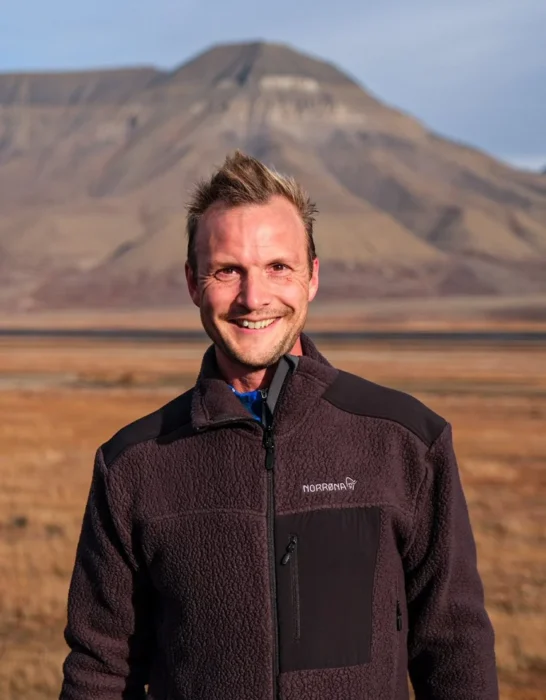
Sebastian Orskaug in Svalbard. Photo: Sebastian Orskaug
Fundraising idea
Operating under the expedition name Polar Rideshare, Orskaug aims to combine adventure with science. He is partnering with research institutes and companies to collect samples, take measurements, and test new equipment, describing the concept as similar to CubeSats hitching rides on orbital rockets. The idea is to sell “scientific payloads” that can be carried and deployed during the journey.
Orskaug will also carry a Starlink Mini in an effort to livestream his progress to the South Pole. Having assembled the project in only three months with limited funding, he says the level of interest already generated suggests that the model could offer a sustainable path for future Antarctic expeditions.
Hercules Inlet route
American Monet Izabeth, 35, will set out from Hercules Inlet on November 20, aiming to complete a solo and unsupported ski to the South Pole. If successful, she will become the first American woman to do so. She estimates the 1,130km journey will take 50 days.
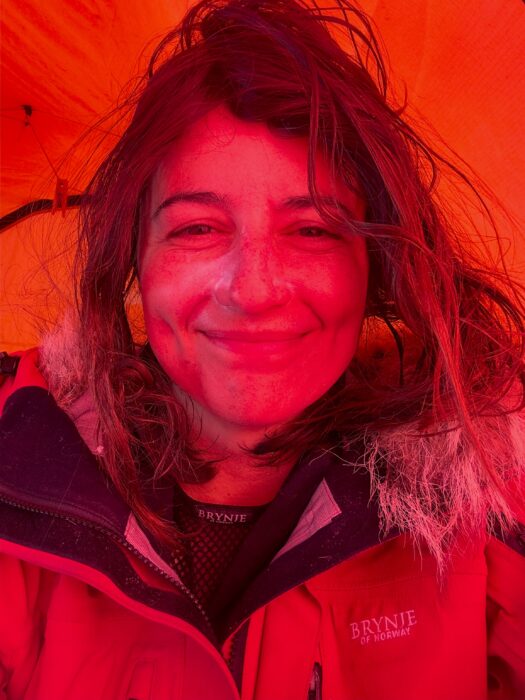
Monet Izabeth in Greenland. Photo: Monet Izabeth
Izabeth’s interest in adventure began when she joined a British Army expedition to Mount Kenya to locate the crash site of her great-uncle’s plane. Since then, she has organized and led adventure trips around the world while pursuing her own independent expeditions.
She will turn 36 during the journey, which marks her most ambitious undertaking to date.
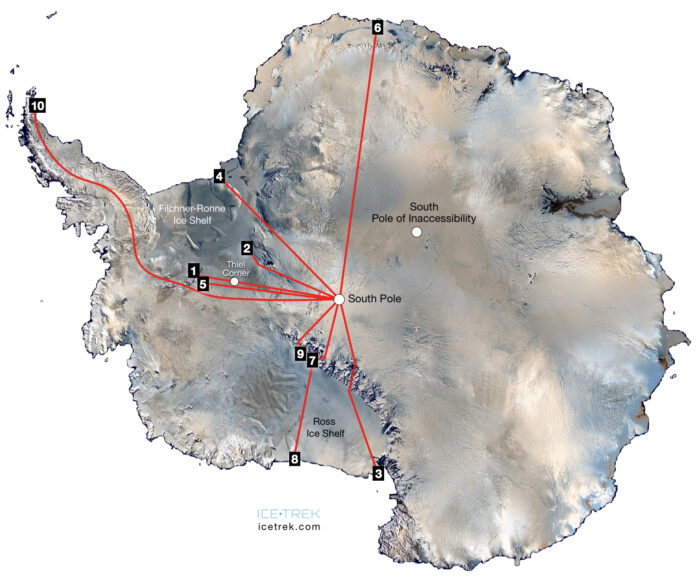
The 10 most popular routes to the South Pole. 1. Hercules Inlet 2. Messner Start 3. Ross Island 4. Berkner Island 5.Patriot Hills 6. Novo 7. Axel Heiberg Glacier 8. Bay of Whales 9. Leverett Glacier 10. Larsen Ice Shelf. Map: Eric Philips/Icetrek
Mexican mountaineer Andrea “Andy” Dorantes also plans a solo, unsupported ski expedition from Hercules Inlet to the South Pole this season. She ks aiming to finish in 55 days. Earlier this year, Dorantes completed a crossing of the Greenland Ice Sheet, adding to an already extensive adventure resumé that includes climbing the Seven Summits and a last-degree ski expedition to the South Pole.
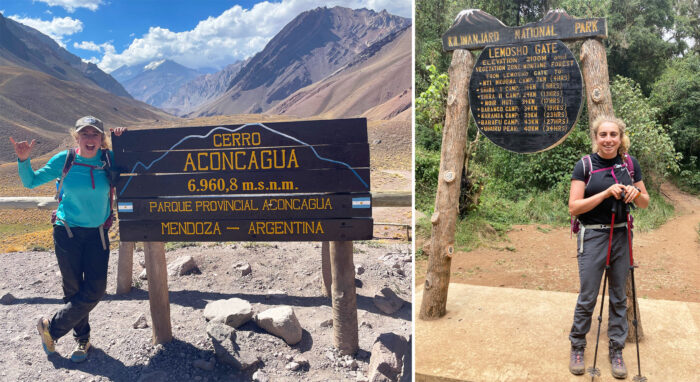
Photo: Andrea Dorantes
Messner route
The sole skier on the 911km Messner Route this season is British adventurer Ian Hughes, 56. He plans a solo and unsupported ski to the South Pole.
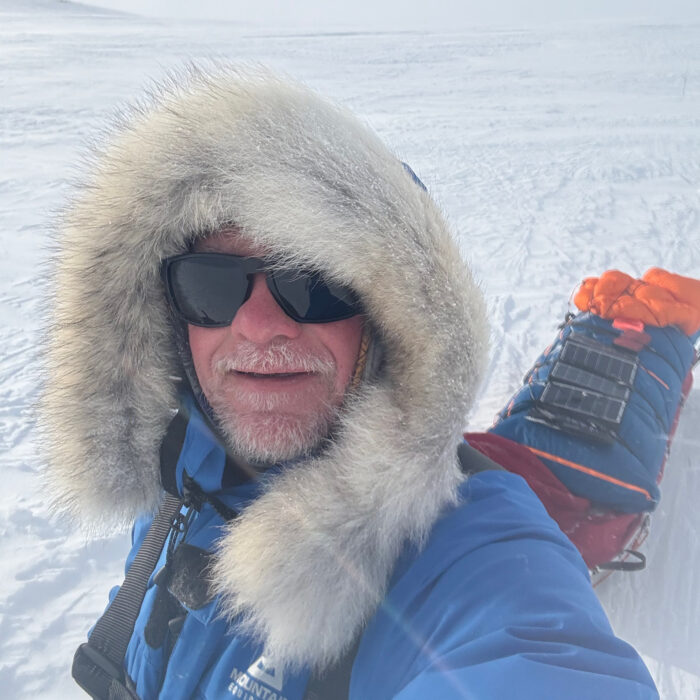
Photo: Ian Hughes
A former soldier and deep-sea diver, Hughes has climbed five of the Seven Summits, including Mount Everest, and wants to complete the Explorers Grand Slam within the next two years. He expects to spend 45 to 50 days on the ice, with an estimated start date of around November 20. Hughes will turn 57 during the expedition.
Speed record attempt
Tom Hunt, 27, of the UK, will try to break the Hercules Inlet to South Pole speed record this season. The record was last set on Jan. 11, 2024, when Vincent Colliard completed the route in 22 days, 6 hours, and 8 minutes, nearly two days faster than Christian Eide’s long-standing 2011 time of 24 days, 1 hour, and 13 minutes.
Hunt plans to start before December 1, weather and flight schedules permitting. To surpass Colliard’s mark, he will need to average at least 52km per day over the 1,130km route, skiing solo and unsupported.
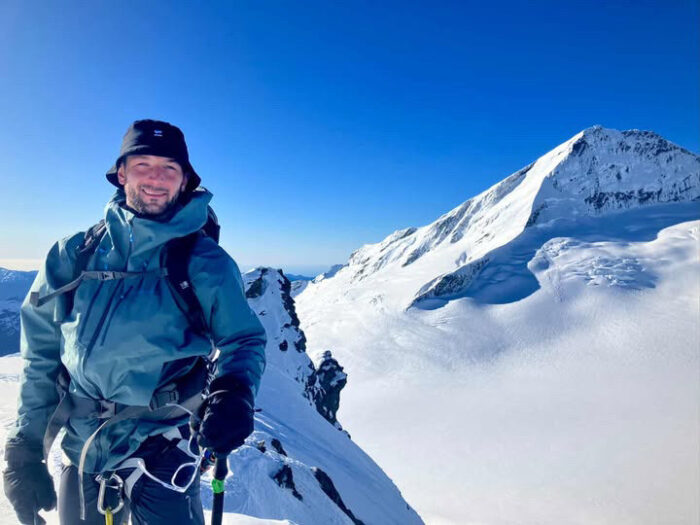
Photo: Tom Hunt
His previous expeditions include a three-week solo, unsupported sled journey in Lapland (2023), a joint record-setting win of the 6633 Arctic Ultra (611km) the same year, and a Svalbard east–west crossing in early 2025.
Other expeditions
Veteran Norwegian polar expert Lars Ebbesen, a well-known logistics consultant and honorary IPGA polar guide, will head south next week for a short Antarctic swansong. From the Russian research station Novolazarevskaya, Ebbesen will transfer to the Wolfs Fang runway in Queen Maud Land before skiing approximately 250km to the Norwegian Troll Research Station.

Ebbesen, back in training this year. Photo: Lars Ebbesen
Ebbesen is one of the most experienced figures in modern polar logistics and has completed multiple crossings of Greenland and Svalbard. In 1994-5, he skied unsupported from Berkner Island to the South Pole with Cato Zahl Pedersen and Odd Harald Hauge. During that expedition, Pedersen, who had one full arm and one partial arm amputated, became the first person with a disability to ski to the South Pole.
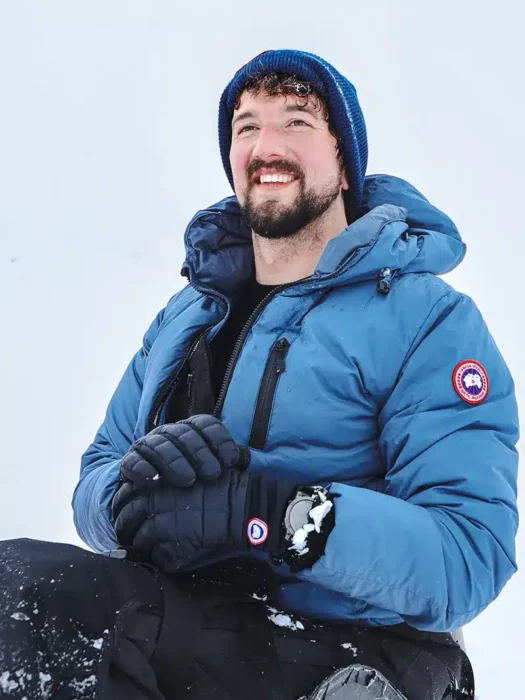
Darren Edwards. Photo: Darren Edwards
Three decades after Cato Zahl Pedersen’s journey, Britain’s Darren Edwards, 33, who is paralyzed from the chest down, will attempt to sit-ski the final three degrees (333km) to the South Pole. He will be joined by teammates Lucy Shepherd, Matthew Biggar, and Dwayne Fields.
